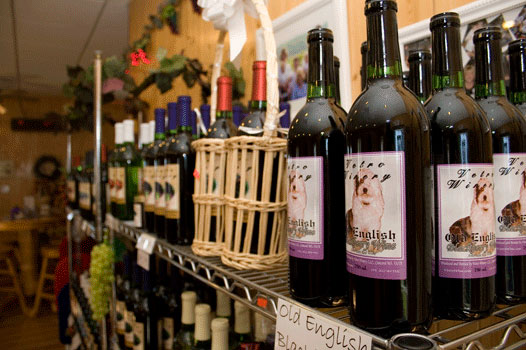 |
|
 |
| Aged to Perfection |
| Pop Art |
| Bottling Up Success |
| Edible Art |
| Bottling Up Success: The Ingenuity behind Wisconsin Wine | ||||||||||||||
| Continued... | ||||||||||||||
“Most people don’t like the real earthy wines that come in,” Gomon said. Bill Vetrano added, “I’ve noticed in California they always say, all they make is fruit wine out in Wisconsin. But that’s what people seem to like. People seem to like it sweeter, too, whereas out in California, it’s drier.” A wine’s flavor is a complex combination of scent, acidity, sweetness and bitters. Over 1,500 different kinds of grapes can be used in winemaking, Gomon said. In addition, hundreds of different yeasts are used to ferment those grapes, or other fruits, into wine. Consequently, creating a new wine involves limitless choices. Gomon researches the characteristics of the yeasts he considers based on what he wants the final flavor to be. Some yeasts bring out the wine’s fruity undertones, while others create a drier spiciness. Different yeasts are also more or less aggressive. They ferment at different rates and different temperatures. Because the fermenting yeast turn the fruit’s natural sugars into alcohol, the final alcohol content also depends on the yeast and how long it was allowed to ferment. “With a sweeter wine there’s less alcohol than in a dry wine because the fermentation doesn’t go all the way through,” he said.
As a new wine develops, Gomon measures the levels of the acids and sugars that occur naturally in fruits. He has instruments that measure the levels for him, but he also relies on his own taste. “Probably about 50 percent of it is taste,” he said. Although sweet flavors can be more obvious, acidity also plays an important part in creating a balance to the wine’s overall taste. “It’s this feeling you get on the back of your tongue, that’s the acidity,” Gomon said. “If there’s not enough acidity, that can be bad, too, because the wine will have a sticky sweet feeling when you're done tasting it.” Gomon’s only blended grape wine, an original recipe made from merlot, cabernet and zinfandel called “'47 pickup," has a biting sharpness to its finish. “The acidity … is higher than I would like it to be and hence it has more of a sharpness to it,” he said. “I’m going to try to get some grapes from a different location this year.” Gomon's ’47 Pickup also demonstrates an experiment in blending flavors. “I wanted a dry that wasn’t real bitey or earthy and was kind of soft,” Gomon said. “So I used more merlot to kind of bring out the fruit, and then I like a little spiciness in the wine too, so I added a little zinfandel in there. Zinfandel is kind of peppery.” Taste, however, varies for each drinker. While some flavors are unmistakable to the knowledgeable palate, different wines can suggest different flavors depending on the person. “It’s really based on what you’re used to eating as a child growing up and so you’ll taste different things,” Gomon said.
Other outside factors can affect the flavor of a wine as well. For example, Bill Vetrano recommends finishing a wine a week, at most, after it has been opened. As soon as the bottle is opened, an oxidation process begins that changes the aroma and flavor of the wine. “We learned the hard way, pouring for people,” he said. “They’d be making funny faces … so then I tried and oh, OK, no wonder. Since then we’ve put dates on there so that we know exactly when to stop putting it out for testing.” |
||||||||||||||
Home | Sights | Sounds | Tastes | Experiences | Our Picks
About Us | Contact Us | Business Partners | Archives | Sitemap
Copyright 2007 Curb Magazine

